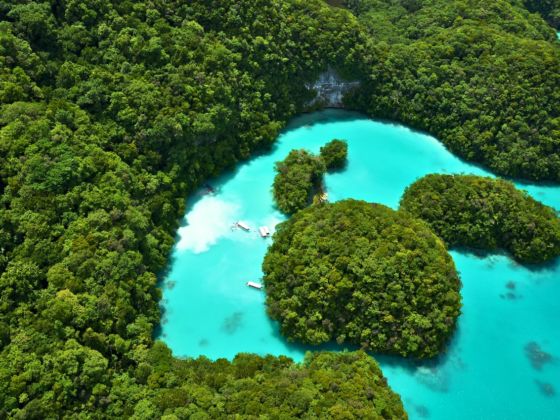PALAU IS AN ARCHIPELAGO nation in Micronesia made up of 200+ limestone islands. It has a middle-of-nowhere feel, ~500 miles from its nearest neighbors of Mindanao, Philippines, and North Maluku, Indonesia.
No one you know has been to Palau, (unless your grandpa was in the Navy during WWII or your friends are serious divers), but that — along with its geography, climate, and small local population — have helped keep it a pristine place to get in the water. Visibility edges up to 150 feet.
